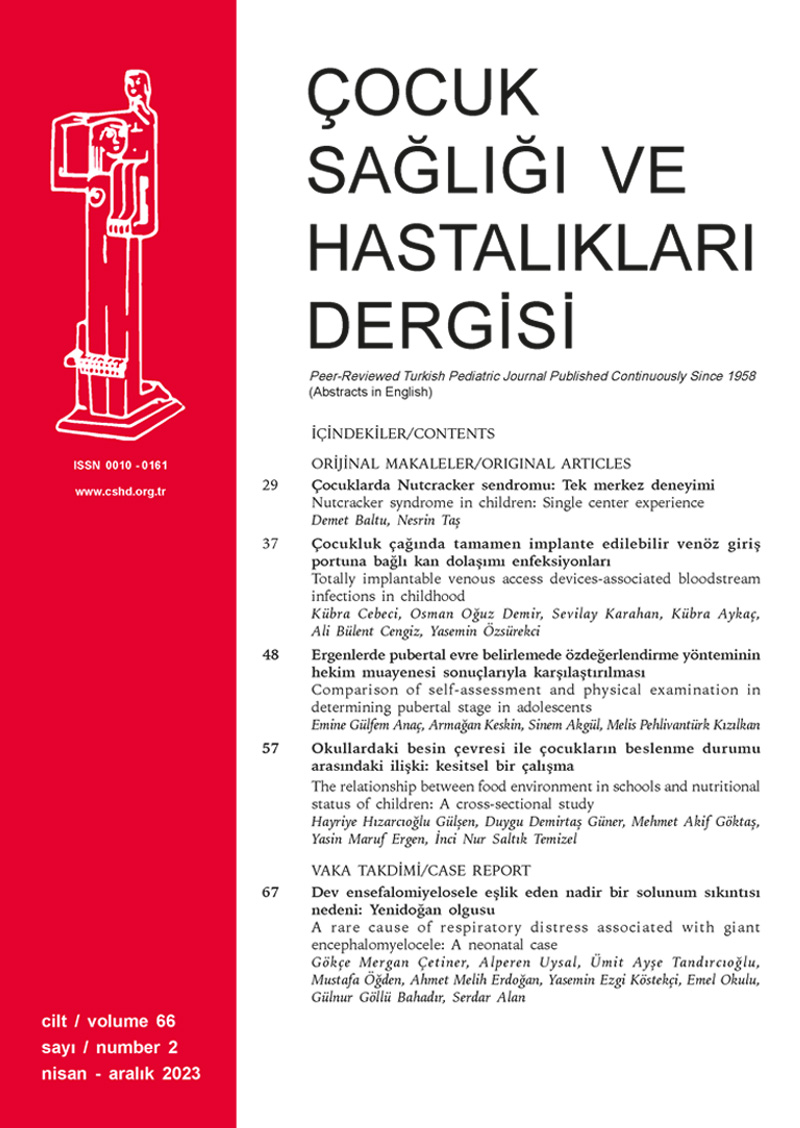Öz
Çocukluk çağında tamamen implante edilebilir venöz giriş portları ile ilişkili kan dolaşımı enfeksiyonlarının (Pİ-KDE) insidansı ve sonuçları iyi tanımlanmamıştır. Türkiye’de üçüncü basamak bir çocuk hastanesinde çocuk hastalarda Pİ-KDE’nin 5 yıllık insidans ve sonuç parametrelerini gözden geçirmek için retrospektif bir çalışma tasarladık. Genel Pİ-KDE insidansı 10.000 kateter günü başına 14.8 enfeksiyondu. Genç yaş ve altta yatan hematolojik maligniteler Pİ-KDE için risk faktörleriydi. En sık izole edilen bakteri Staphylococcus spp. idi ve kan dolaşımı enfeksiyonuna (KDE) (%53) ve port cebi enfeksiyonuna (n=7, %6.2) bağlı olarak portlar çıkartıldı. Pİ- KDE olan hastalarda tedavi sonunda klinik ve mikrobiyolojik cevap oranları KDE olan hastalara göre daha düşüktü (sırasıyla, p=0.01 ve p=0.002) ve enfeksiyonla ilişkili mortalite ise nispeten daha yüksekti (%12.4’e karşı %4.1). Pİ-KDE’nin yanı sıra hematolojik maligniteler de olguların klinik ve mikrobiyolojik yanıtları için önemli risk faktörleri olarak gösterilmiştir. Risk faktörlerinin ve hastane bazlı ihtiyaçların belirlenmesi, KDE’li hastalarda Pİ- KDE ve port kaybını önlemek ve hasta sonuçlarını iyileştirmek için en önemli adım gibi görünmektedir.
Anahtar Kelimeler: Kan dolaşımı enfeksiyonu (KDE), port ilişkili KDE (Pİ-KDE), pediatri








